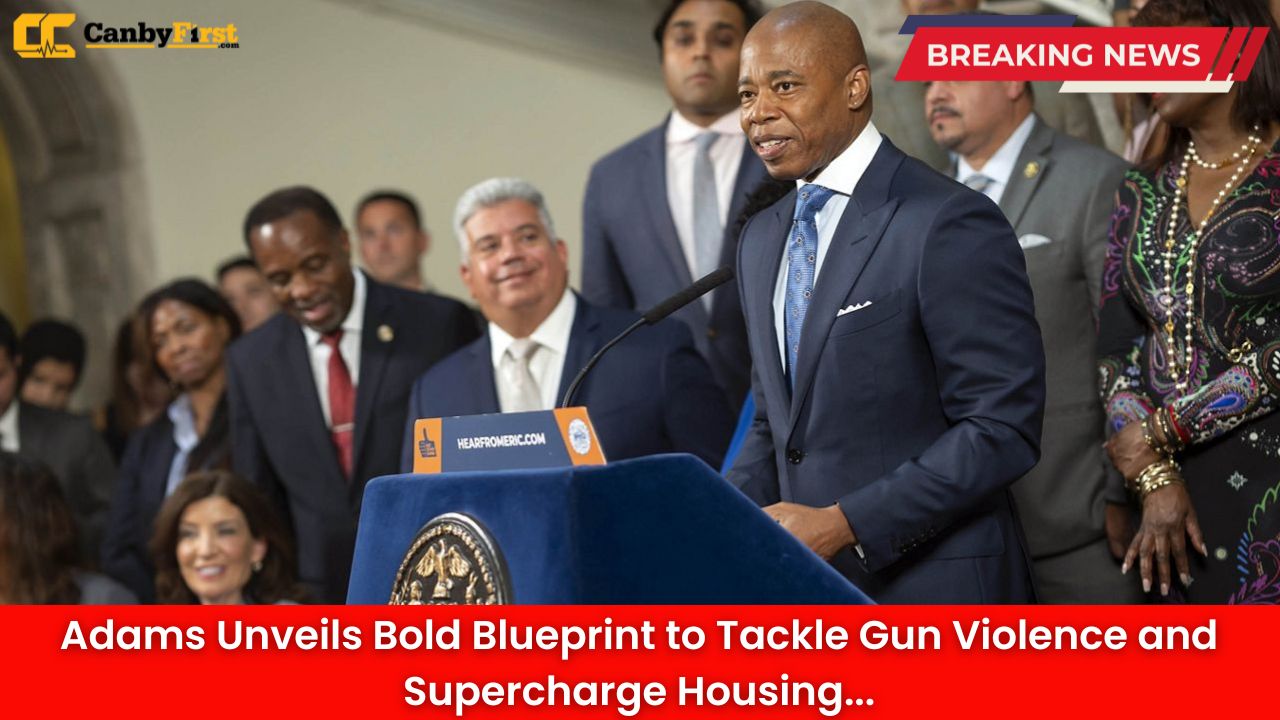New York, US: Mayor Eric Adams today unveiled an ambitious two-pronged strategy aimed at curbing gun violence across the city while accelerating the construction of affordable housing in underserved neighborhoods. In a detailed address at City Hall, the mayor framed his plan as a transformational effort to enhance public safety and expand opportunity for New Yorkers citywide.
A Unified Vision for Safety and Shelter
Standing before local elected officials, community leaders, and law enforcement representatives, Mayor Adams emphasized that safe streets and secure homes are inseparable foundations for a thriving city. “We cannot prosper if our children fear for their lives, nor can we reach our full potential if families cannot afford a stable place to live,” Adams declared. His plan centers on increased funding for community policing initiatives alongside a sweeping housing development program designed to deliver tens of thousands of new homes over the next five years.
Strengthening Community Policing and Gun Prevention
The mayor’s anti–gun-violence measures include:
Also Read
-
Expanded Neighborhood Policing: The administration will allocate an additional $100 million to grow the acclaimed Neighborhood Policing program, increasing the number of officers embedded within local precincts. These officers will work directly with residents to identify violence drivers and build trust.
-
Focused Deterrence Units: Specialized teams will target the most violent offenders through data-driven intelligence, paired with street outreach workers who engage individuals at risk of gun-related crimes.
-
Gun Buyback and Safe Storage Campaigns: New incentives will encourage New Yorkers to turn in firearms safely. Paired with free secure-storage devices, the campaign seeks to remove illegally possessed weapons from circulation.
-
Youth Mentorship and Intervention: Expanded after-school programs, mentorships, and summer jobs will be funded in high-need neighborhoods—aimed at steering at-risk teens away from violence.
-
Enhanced Technology and Analysis: The NYPD will receive upgrades to crime-mapping systems, enabling real-time data analysis and faster precinct responses to emerging hotspots.
By blending law enforcement with community outreach, Mayor Adams said the city can achieve meaningful reductions in shootings without returning to aggressive tactics of the past.
Accelerating Affordable Housing Production
Complementing public-safety efforts, the mayor laid out a major housing push:
-
City-Led Developments: New York City will partner with nonprofit developers to break ground on 25,000 affordable units within five years. These mixed-income buildings will reserve at least 60% of apartments for households earning below 80% of the Area Median Income.
-
Zoning Reforms and Fast-Track Approvals: The administration will remove bureaucratic hurdles and streamline approvals, slashing the average permitting timeline by 30%. New “Affordable Neighborhoods” zoning overlays in the Bronx, Brooklyn, Queens, and Upper Manhattan will allow builders to add density in exchange for deeper affordability.
-
Homeownership Opportunities: A fresh down-payment assistance program will offer forgivable loans of up to $40,000 for first-time buyers, helping qualified families secure permanent homes rather than rent short-term.
-
Preserving Existing Housing Stock: The plan dedicates $500 million to rehabilitate rent-stabilized apartments and support small landlords, preventing displacement in gentrifying areas.
Mayor Adams stressed that housing affordability is an urgent crisis. “Stable roofs over our heads are as vital as safe streets under our feet,” he said, promising neighborhoods once starved of investment would see new life and opportunity.
Collaborative Approach and Stakeholder Buy-In
Key to the plan’s success, Adams indicated, will be close coordination with the City Council, community boards, and criminal justice partners. Over the next month, city agencies will hold public hearings in each borough to refine district-specific strategies and incorporate resident feedback. The mayor’s office is also convening a new task force that brings together law enforcement chiefs, housing advocates, mental health professionals, and youth leaders to oversee implementation.
Police Commissioner Keechant Sewell praised the focus on data-driven policing and community trust-building, while housing advocates applauded the administration’s willingness to embrace zoning modernization. Still, critics on both sides caution that funding must be sustained and that political will could waver amid competing budget pressures.
Funding the Vision
To finance the dual agenda, Mayor Adams proposes a reallocation of existing discretionary dollars, a modest uptick in building-related fees, and leveraging federal grants from President Biden’s infrastructure and community-safety initiatives. City Hall projections estimate the plan will require $3.2 billion over five years—an amount the mayor insists can be absorbed without raising broad-based taxes.
Measuring Progress and Accountability
Adams stressed that success will be measured through clear, public metrics: quarterly shooting statistics, precinct-level community surveys, housing starts by neighborhood, and affordability thresholds met. A dedicated dashboard on the city’s website will track these indicators in real time, ensuring transparency and enabling course corrections as needed.
Looking Ahead
As New York grapples with rising rents and isolated pockets of violence, Mayor Adams’s comprehensive proposal seeks to confront both crises head-on. By marrying enhanced public safety with aggressive housing expansion, the administration hopes to deliver tangible improvements in daily life for all New Yorkers. The coming weeks of hearings and council deliberations will prove decisive, but for now, the mayor’s blueprint offers a bold vision of a safer, more affordable city—one in which every resident has both a secure neighborhood and a place to call home.












